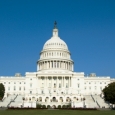Mine Safety
Mining is one of the nation’s most dangerous jobs. Since 1900, 104,722 Americans have died in coal mining accidents (23,608 in non-coal sectors) while hundreds of thousands have died from black lung, an incurable lung disease brought on by consistent inhalation of coal dust. The first federal mine safety law was passed in 1910, and the government has slowly added new laws every few decades since, usually in the wake of disaster. In 1977, the Mine Safety and Health Administration (MSHA) was created to promulgate, monitor and enforce safety regulations.
Commentary
Massey CEO: "It's (Always) The Government's Fault"
Cry Wolf Quotes
More money could be available for worker safety and health if we cut back on bureaucratic administration, because an OSHA/MSHA merger would end duplicative costs, duplicative employees and duplicative actions.
Mr. Forbes, a former director of the Bureau of Mines has gone on record as saying that accidents are problems of human failure and that if the Bureau and industry are going to correct these accidents that they have to be attacked through the medium of correction within the human mind, and the human body, and the man has to be made to act safely.
[This bill is] “galloping socialism in one of its purest forms. [It is] “founded on sensationalism and irresponsibility, nurtured on emotionalism and passed…with total disregard of proven medical facts.
Obviously, I don't want to speculate, but either something went wrong from a natural/unnatural manner that was not foreseeable by us or human beings or somebody made a mistake or something.
Related Laws and Rules
- Coal Mine Health and Safety Act of 1969
- Coal Mine Safety Act of 1952
- Mine Improvement and New Emergency Response Act (MINER)
- Mine Safety Act of 1910
- Mine Safety Act of 1941
- Mine Safety and Health Act of 1977
- Mine Safety Code of 1946-47
- Robert C. Byrd Mine Safety and Health Act
- Safety and Health Improvement and Regulatory Reform Act of 1995
Evidence
- Occupational Health and Safety Regulation in the Coal Mining Industry: Public Health at the Workplace (Subscription Required)
- Underground Coal Mining Accidents and Government Enforcement of Safety Regulations
-
Fatality Rates and Regulatory Policies in Bituminous Coal Mining, United States, 1959-1981
This study looks a coal mining deaths in the decade leading up to the game-changing Coal Mine Health and Safety Act of 1969, and then examines what happened in the decade after passage. The key take way: "For the period from 1950 to 1969, there was no decline in fatality rates among underground miners. For the period from 1970 to 1980, there was a significant decline in fatality rates."
Backgrounders & Briefs
2011 Death on the Job
The AFL-CIO's annual report about death, illness, and injury at work.
Resources
The Charleston Gazette's blog Coal Tattoo, written by veteran reporter Ken Ward Jr., is a cutting edge blogon the coal industry.
The Mine Safety and Health Administration is the goverment agency responsible for the regulation of America's mines.



